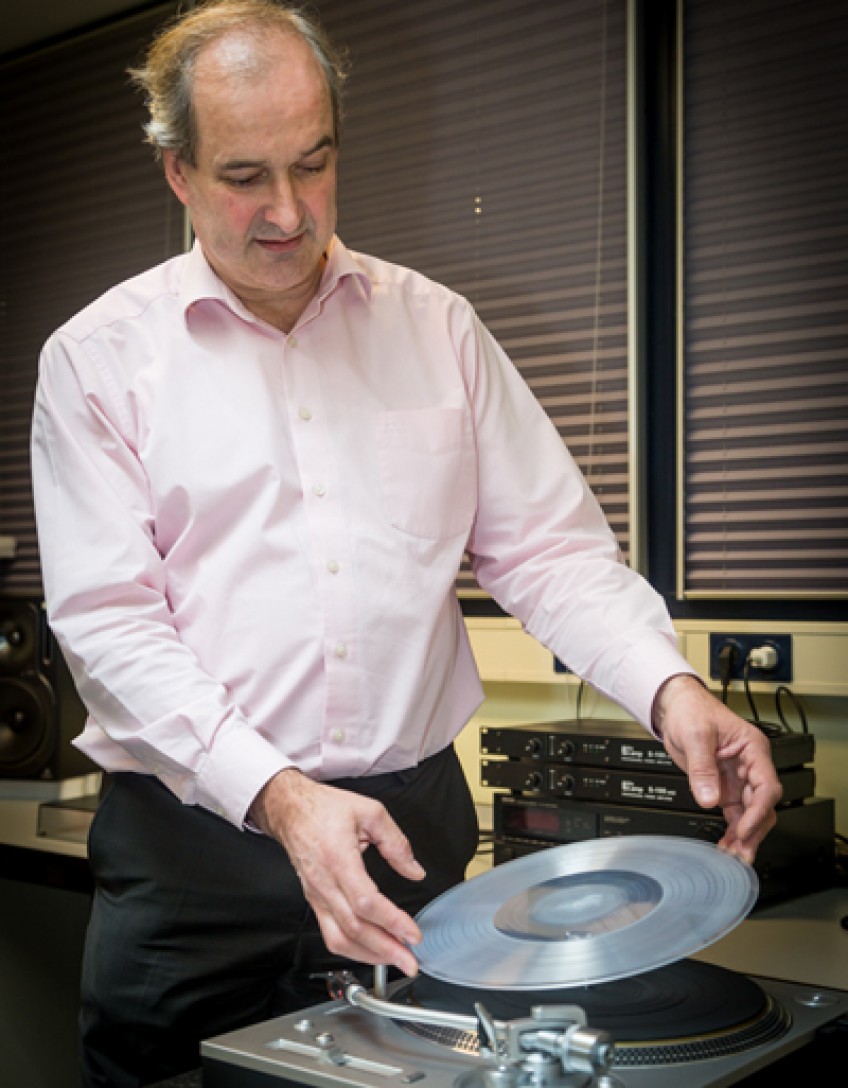Of course you know that when you put the needle on a vinyl record, the grooves provide the sound. But did you know that the technology to realize this is a very complex and precise job? Especially during the search for a new material and technology to produce the record with. Every material reacts differently and thus has its properties. It is precisely this research that is being conducted by students from Fontys University of Applied Natural Sciences under the supervision of Jan Bernards, Lector Thin Films & Funcional Materials.
Jan Bernards: “Fontys participates in the project from the Applied Science and Applied Physics courses. In the Applied Science training, one of the spearheads is doing research on plastics and in Applied Physics training doing research on acoustics, so on sound and the quality thereof. Vinyl records are sound carriers made of plastics, which means that this project fits in well with these spearheads. Our role within the project is therefore to measure and characterize the plastics and to validate the sound quality of the new type of vinyl.
Groove shape determines the sound
“The biggest challenge in our research is to get the right groove shapes, so that the Green Vinyl Record reaches the familiar sound of vinyl. The groove shape determines how the needle goes over the plastic and how the sound sounds. To determine whether the sound is also good, this is tested and validated by the Applied Physics students. ”Said Jan.
More feeling than recorded
However, testing and validating is easier said than done. “Making and testing the correct grooves involves all kinds of hooks and eyes. For example, there are all sorts of aspects that people used to know in the production of the record, but it is by no means always well described or substantiated why certain techniques or settings on the machine did or did not work well. It was often a matter of feeling and experience. Because a completely new production technique is being developed for the LP, from printing presses to injection molding, we also have to understand the original production process well, measure it and draw conclusions. ”This goes a long way, for example, the students analyze both the new and old vinyls. with an electron microscope, sometimes with magnifications up to a few times 1000x.
Future perspective and knowledge sharing
Jan: “Through this project we have expanded our knowledge in the field of polymers and the processes involved in making these types of products. We can of course also use this knowledge in new projects and adjust our curriculum accordingly. Our students learn a lot from this and expand their network so easily. In this way they take all these experiences with them to the companies where they will work in the future. "













